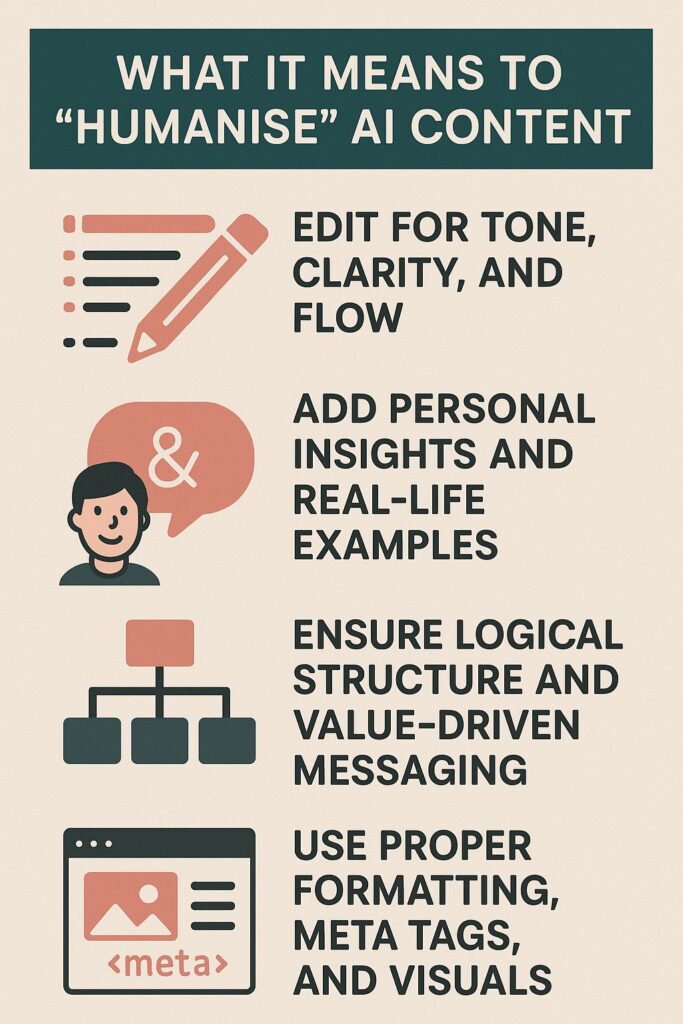AI tools have transformed content creation, allowing for fast, scalable writing that is coherent and grammatically accurate. However, despite its polished appearance, this content often lacks the nuance, depth, and personality that truly connect with readers. This is where the humanising process becomes essential.
Humanising AI content involves modifying machine-generated text into material that feels natural, valuable, and credible- text that sounds like it was crafted by humans for humans. Instead of viewing AI-generated output as a final product, it should be seen as a first draft: an initial version that requires refinement, enhancement, and the input of a human touch.
-
Edit for Tone, Flow, and Clarity
The initial step to make AI content more human-like is to refine its language. Although AI may produce correct grammar, its wording often comes across as stiff or robotic. Editors should:
- Replace awkward or repetitive expressions
- Improve sentence transitions and paragraph flow
- Adapt tone to suit the brand or audience (e.g., warm, professional, casual, expert)
These adjustments help the content sound more conversational and reader-friendly.
-
Add Personal Insights and Examples
AI excels at summarising existing information online, but it lacks the ability to incorporate personal experiences. To humanise content effectively, it is essential to include personal insights, expert perspectives, or anecdotes. These components not only differentiate the content but also foster trust with the audience. Authentic stories or examples specific to the industry can convert general advice into practical insights.
-
Strengthen Structure and Logic
Many AI-generated articles adhere to a formulaic structure that may be sufficient but lacks inspiration. Humanising the piece requires enhancing the structure to ensure:
- A clear introduction that sets expectations
- Smooth progression from one idea to the next
- Elimination of filler or redundant content
- Strong conclusions with a call to action or summary
Organised, intentional structure makes the content more engaging and easier to digest.
-
Optimise for SEO and User Experience
Even top-notch content can fall short if formatting is lacking. To humanise AI text, it is essential to customise it for both search engines and readability. This means incorporating suitable subheadings, linking to internal and external resources to provide context and authority, including relevant calls to action, using lists for enhanced clarity, and optimising title tags, meta descriptions, and images. These improvements help both users and search engines to comprehend better and appreciate your content.
In a landscape where content is abundant but quality is low, those brands and creators who invest time in humanising their AI-generated material will shine. It is not solely about meeting Google’s algorithm requirements; it is about genuinely engaging with your audience.
Looking for assistance in making your AI-generated content resonate more with human readers in various languages?
Our team specialises in refining content to meet SEO standards and audience needs.
Get in touch to discover more or to ask any questions!
Check our social media: Facebook / LinkedIn
If you want to read about previous years with MD Online, click here!


Leave a Reply